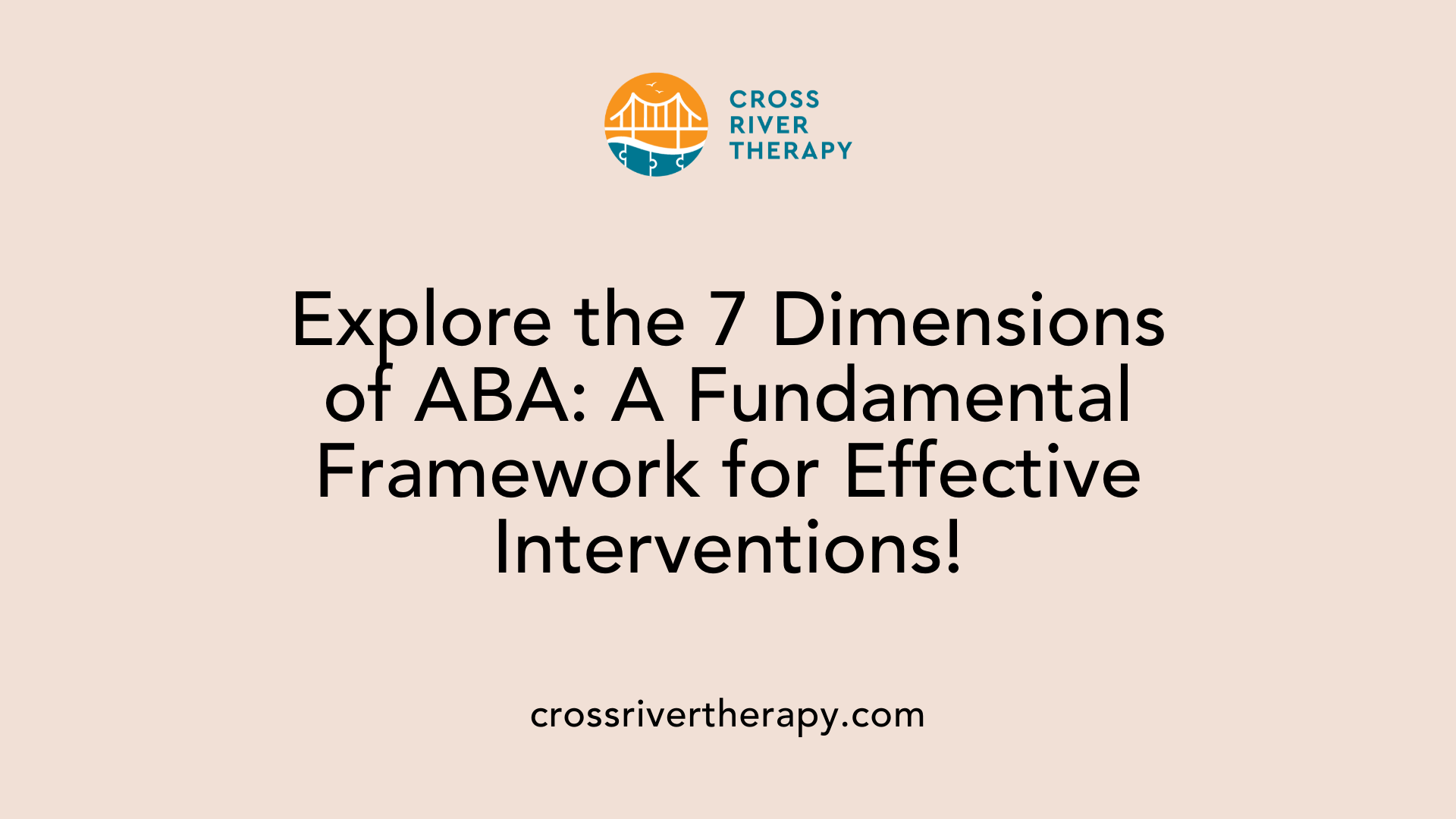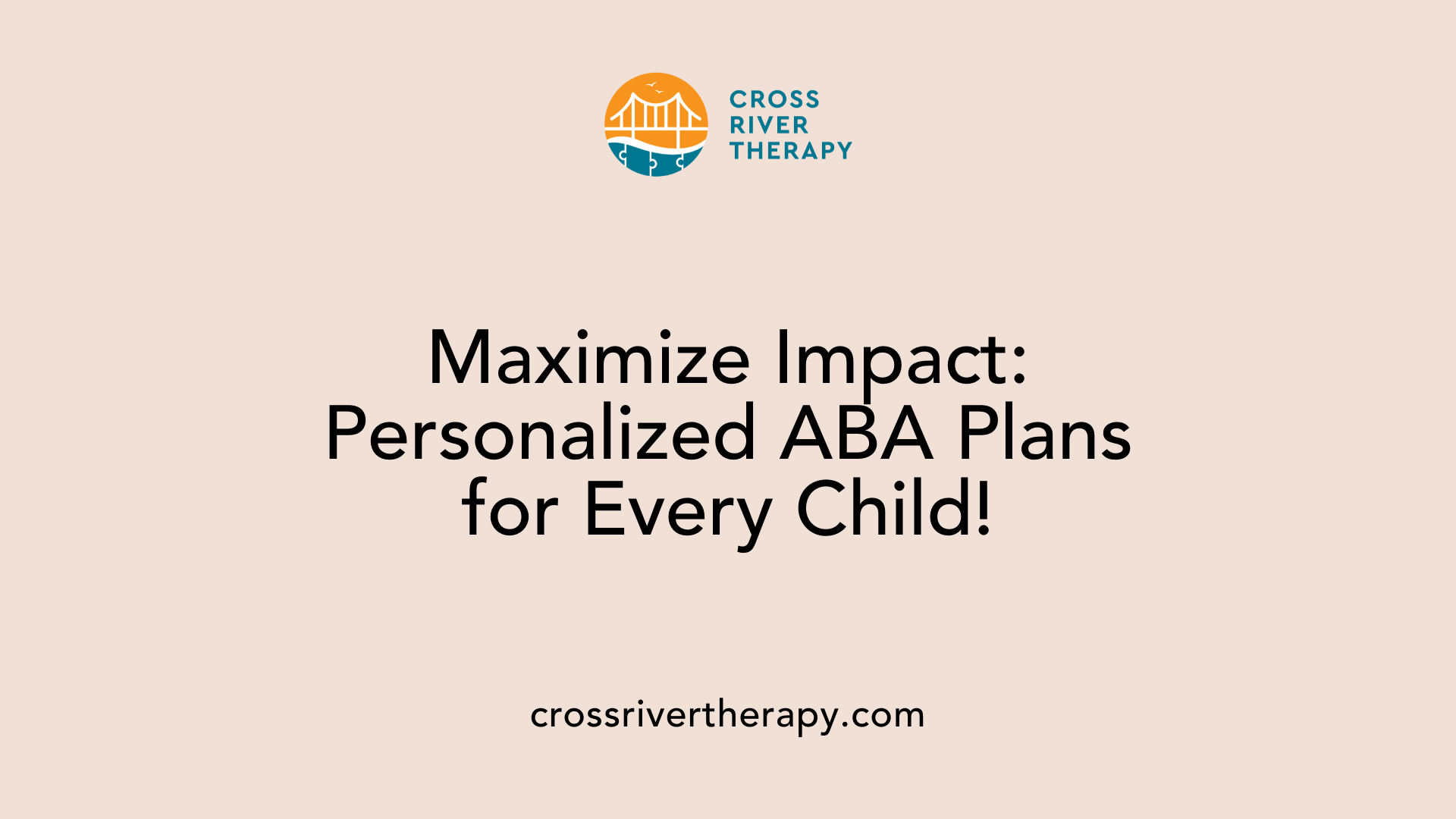How to Prepare for ABA Sessions
Mastering the Essential Preliminaries for Effective ABA
Getting Ready for ABA: The Essential Steps
Preparing for an Applied Behavior Analysis (ABA) session is a cornerstone of ensuring impactful and productive therapy. ABA serves as a recognized form of therapy for children with autism, using evidence-based techniques to enhance social, communication, and learning skills. With careful preparation, you can optimize these sessions to greatly benefit the participant's development. This article will guide you through the essentials of preparing for ABA, offering actionable insights and strategies.
Understanding the Foundations of ABA

What are the 7 dimensions of ABA?
The seven dimensions of Applied Behavior Analysis (ABA) were developed by Baer, Wolf, and Risley in 1968 to ensure effective intervention practices. These dimensions guide practitioners in implementing ABA in a structured and impactful manner.
- Applied: Focuses on socially significant behaviors that enhance individuals' quality of life, such as communication skills and social interactions.
- Behavioral: Stresses the importance of observable and measurable behaviors, ensuring that the target skills can be tracked and assessed.
- Analytic: Emphasizes the use of quantitative data to inform interventions, allowing therapists to analyze the effectiveness of their strategies.
- Technological: Ensures that all procedures are clearly defined and replicable, making the techniques reliable and consistent.
- Conceptually Systematic: Involves grounding practices in established behavioral principles, ensuring they are theoretically sound.
- Effective: Aims to produce meaningful and socially important results that positively influence the client's behavior and experiences.
- Generality: Focuses on ensuring that learned behaviors can be transferred across different environments and maintained over time, leading to lasting improvements in daily life.
These dimensions serve as a framework for practitioners, ensuring interventions are effective and tailored to meet the unique needs of each child. For further insights on this foundational topic, searching "7 dimensions of ABA" will yield additional resources.
Tailoring the Environment for ABA Success

Creating a conducive therapy space
Creating a dedicated therapy space at home is essential for effective ABA sessions. This area should be comfortable and clear of clutter, allowing the child to focus on learning without distractions. Having preferred toys and materials readily available can further engage the child during sessions.
Minimizing distractions
A distraction-free environment is critical for keeping the child's attention during therapy. Parents should ensure the therapy area is quiet and free from interruptions, such as household noise or pets. Informing family members about the therapy schedule helps maintain an undisturbed atmosphere, fostering a more effective learning experience.
Family involvement
Family involvement in ABA sessions is crucial. When parents and siblings are present, it enhances communication and social skills for the child with autism. Engaging family members allows them to observe the strategies used by therapists, facilitating practice and reinforcing learned skills in everyday situations. With open communication, families can provide valuable feedback to therapists, ensuring tailored support that meets the child's needs.
| Strategy | Purpose | Benefits |
|---|---|---|
| Dedicated therapy space | Focus during sessions | Improved attention and engagement |
| Minimized distractions | Maintain focus | Enhanced learning environment |
| Family involvement | Reinforcement of skills | Better communication and understanding |
Setting Goals and Gathering Essentials for ABA

How to prepare for an ABA session?
Preparing for an ABA session involves several crucial steps to ensure effectiveness. Begin by setting clear, SMART (Specific, Measurable, Achievable, Relevant, Time-bound) goals tailored to focus on specific skill development and track progress effectively. Aligning these goals with the child's unique needs makes sessions more productive.
Next, gather the necessary materials and resources that cater to the child's strengths and challenges. Essential items for an ABA session might include:
| Material | Purpose | Examples |
|---|---|---|
| Data collection tools | Track progress and behavior | Data sheets, timers |
| Reinforcers | Encourage positive behavior | Favorite toys, snacks |
| Learning materials | Facilitate skill development | Visual aids, educational games |
Additionally, creating a supportive and engaging environment is vital. Choose a quiet space, free from distractions, to enhance focus. Implement strategies like Discrete Trial Training (DTT) and Natural Environment Training (NET) to teach skills through both structured activities and real-life situations, ensuring a holistic approach to learning.
Personalizing ABA Sessions for Maximum Impact

Individualized Session Plans
Personalizing ABA therapy sessions is crucial. Each session should be tailored to the child’s unique strengths, needs, and preferences. This involves gathering essential information, including developmental history and current skill assessments. Based on this data, therapists create a defined treatment plan that aligns with specific objectives for each session. Goals can range from improving communication skills to enhancing social interactions.
Involvement of Parents and Caregivers
Parental and caregiver involvement is a cornerstone of effective ABA therapy. Engaging family members enables them to reinforce skills learned during sessions in real-life situations. They can also help identify triggers for challenging behaviors and communicate important observations. To support the child’s growth, families should maintain open communication with therapists, ensuring that strategies and goals are clearly understood and implemented. This collaboration not only fosters a supportive environment but also maximizes the child's learning potential.
Duration and Structure of ABA Sessions

How long should an ABA session last?
The duration of an ABA session can vary significantly depending on the individual needs of the child and the goals of the treatment. Typically, ABA programs suggest sessions lasting between 1 to 4 hours, with the intensity of therapy influencing the length.
Most children benefit from a total weekly commitment of 20 to 40 hours, spread across several sessions. It's important to consider the child's attention span and ability to engage, as longer sessions may lead to fatigue. The optimal session length should be customized based on ongoing assessments of the child's specific needs. This flexibility ensures that therapy remains effective and supportive without leading to burnout.
Different types of ABA activities
ABA sessions incorporate a variety of engaging activities tailored to the child's unique interests and goals. Common activities include:
| Activity Type | Description | Purpose |
|---|---|---|
| Desk Learning | Structured educational tasks | Focus on specific skills and concepts |
| Play Time | Child-led play to facilitate learning | Enhances engagement and enjoyment |
| Snack Time | Interactive snack sessions | Promotes social skills and communication |
| Social Skills | Group activities to practice interactions | Develops essential communication skills |
| Gross Motor | Active play to improve physical skills | Encourages physical fitness and coordination |
| Daily Living | Skills like self-care and hygiene | Fosters independence and practical life skills |
Incorporating these diverse activities helps maintain a dynamic and effective therapy environment, aligning with the principles of ABA.
The Five Critical Steps to Understanding ABA
What are the 5 steps to understanding ABA?
Understanding Applied Behavior Analysis (ABA) involves a systematic approach that consists of five critical steps:
Consultation and Assessment
The process starts with a Functional Behavior Assessment (FBA) conducted by a Board Certified Behavior Analyst (BCBA). The aim is to gather detailed insights into the child's strengths and challenges. This assessment forms the basis for the subsequent steps.Developing the Treatment Plan
Based on the FBA’s findings, a tailored treatment plan is created. This plan outlines specific, measurable goals for the initial six months of therapy, focusing on enhancing the child's skills and addressing behavioral issues.Executing the Treatment Plan
The implementation phase involves personalized sessions with trained behavior technicians, who execute the strategies laid out in the treatment plan, under the supervision of the BCBA.Parental Involvement
Parents play a crucial role by participating actively in their child’s learning experiences. They provide valuable insights and feedback, enhancing the therapy’s effectiveness.Frequent Evaluation
Continuous monitoring and evaluation are key. The ABA team regularly assesses progress and adjusts the treatment plan as needed to ensure that the child’s development is being optimally supported.
Preparing for Success in ABA
With the right preparation and strategies in place, ABA sessions can become a pivotal part of your child's journey towards achieving better social and behavioral outcomes. From understanding foundational ABA principles to creating an optimal learning environment and setting precise goals, each step plays an essential role. Moreover, engaging with the therapy process and maintaining open communication with the ABA therapist can significantly enhance the therapeutic experience. As you gain more insights and become more comfortable with the process, the more impact these sessions can have, leading to lasting positive changes.
References
- How to Prepare for Running Your First ABA Therapy Session as an ...
- 5 Ways to Prepare Your Home for In-Home ABA Therapy | Blog
- How to Run an ABA Session: Tips for Therapists and Parents
- What Happens In An ABA Therapy Session? - Behavioral Innovations
- Preparing for ABA Therapy: A Parent's Guide
- Preparing for ABA Therapy: What to Expect in Your Child's First ...
- How to Prepare Your Home for ABA Therapy |
- How to Run an ABA Session Successfully?
- 5 Key Components of an ABA Session



